Are you fascinated by the idea of living in a small space? Curious about the minimalist and sustainable lifestyle that tiny houses offer? You may have heard of tiny homes, but have you ever considered the unique advantages and disadvantages of square-shaped tiny houses? Let’s explore the benefits of living in a compact house, the eco-friendly aspects of these dwellings, and the ingenious design choices that make them efficient and practical.
Key Takeaways:
- Square-shaped tiny houses provide a compact and minimalist living experience.
- Living in a small space can lead to an eco-friendly and sustainable lifestyle.
- The unique design choices of tiny houses maximize space and utility.
- There are potential challenges to consider, such as zoning regulations and limited storage space.
- Tiny house living encourages a strong sense community and shared resources.
What Constitutes a Tiny House?
When it comes to defining a tiny house, there aren’t any strict parameters, but generally, homes within the range of 100-500 square feet are considered tiny. These compact dwellings offer a minimalist lifestyle and are gaining popularity for their many advantages. Tiny houses can come in different forms, including mobile homes and portable houses, providing flexibility and versatility for those seeking a change of scenery or a simpler way of living.
One common type of tiny house is designed to be mobile, allowing homeowners to transport their homes to different locations. These mobile homes are often constructed on trailer platforms or frames with wheels, making them easy to hitch and move. On the other hand, some tiny houses are portable but remain in one fixed place. These homes are built on foundations but can still be transported if necessary.
Since the emergence of the tiny home trend in 2007, people have embraced the idea of downsizing and living in smaller, more efficient spaces. Tiny houses offer the opportunity to customise and maximise every inch of their limited square footage, creating a space that suits their unique needs and preferences.
To give you a visual idea of what a tiny house looks like, take a look at the image below:
The Cost of Tiny Homes
When considering a tiny house, one of the most significant factors to take into account is the cost. The price of a tiny home can vary greatly, depending on several key factors like the size, materials used, and the amenities included.
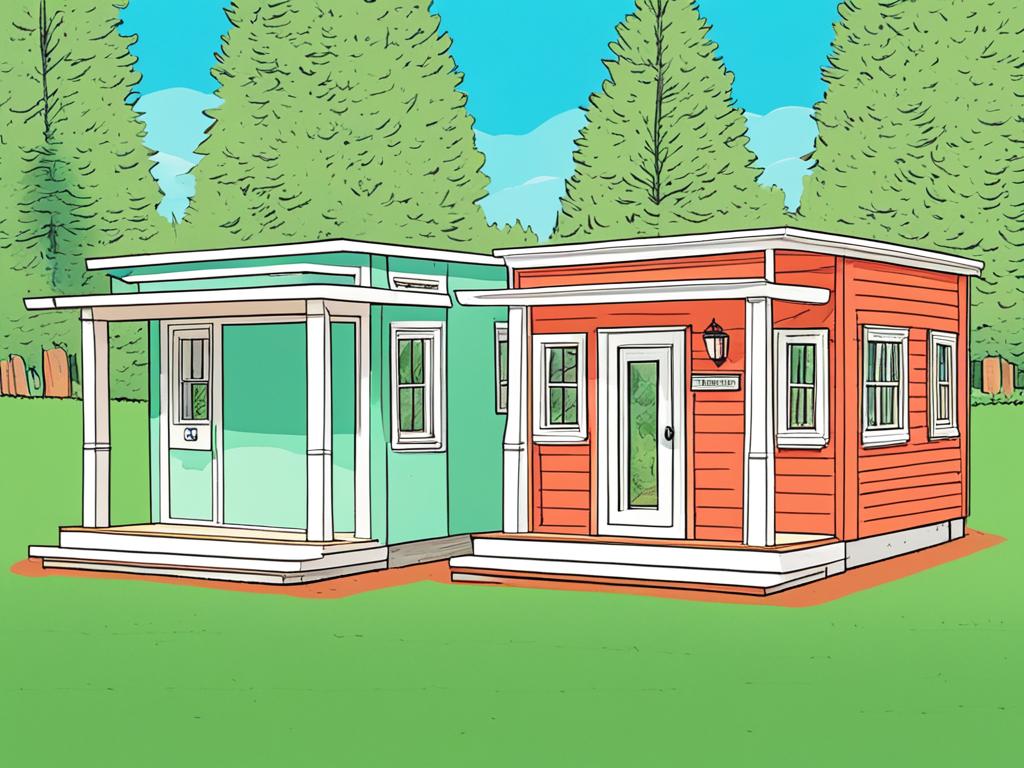
Building a tiny home can be a budget-friendly option, with some small dwellings starting at just £15,000. These minimalist living spaces provide an affordable alternative for those looking to reduce their housing expenses and embrace a more sustainable lifestyle.
On the other hand, if you’re looking for a more luxurious tiny house with high-end materials and top-notch amenities, the price can reach up to £100,000 or more. Such bespoke tiny houses offer a touch of opulence and cater to those with a more refined taste.
While tiny houses are generally known for their affordability, it’s imperative to consider additional expenses. These can include land costs, permits, and customization. These factors can significantly impact the overall cost, and it’s crucial to budget accordingly and be aware of any potential financial commitments.
Whether you choose a modest tiny house or opt for a bespoke high-end creation, the key to making it financially viable is careful planning and balancing your budget. By carefully considering the costs involved, you can make an informed decision and create the tiny house of your dreams.
Advantages of Tiny Houses
Tiny houses offer several advantages for those seeking a more affordable, efficient, and flexible living option. With their smaller square footage, these homes make land ownership more accessible for individuals on a tighter budget. The reduced land requirements mean that small plots can be utilized, minimizing expenses and allowing more people to enter the housing market.
Not only are tiny houses affordable in terms of land, but they also promote energy efficiency. Due to their compact size, these homes require less energy for heating and cooling compared to larger, traditional houses. This reduced energy consumption not only benefits the environment but also lowers utility costs for homeowners.
Another advantage of tiny houses is their portability, enabling homeowners to travel and explore different locations without sacrificing the comfort of home. By customizing their tiny houses to be mobile, individuals can embark on new adventures, embracing travel opportunities and embracing a nomadic lifestyle. Whether it’s a weekend getaway or a long-term exploration, tiny houses provide the flexibility to take your home with you.
Advantages of Tiny Houses:
- Land Affordability: The small footprint of tiny houses allows for smaller and more affordable land plots.
- Energy Efficiency: Compact size results in reduced energy consumption for heating and cooling, which lowers utility costs.
- Travel Opportunities: Adaptability and portability make it possible to take your home with you and explore different locations.
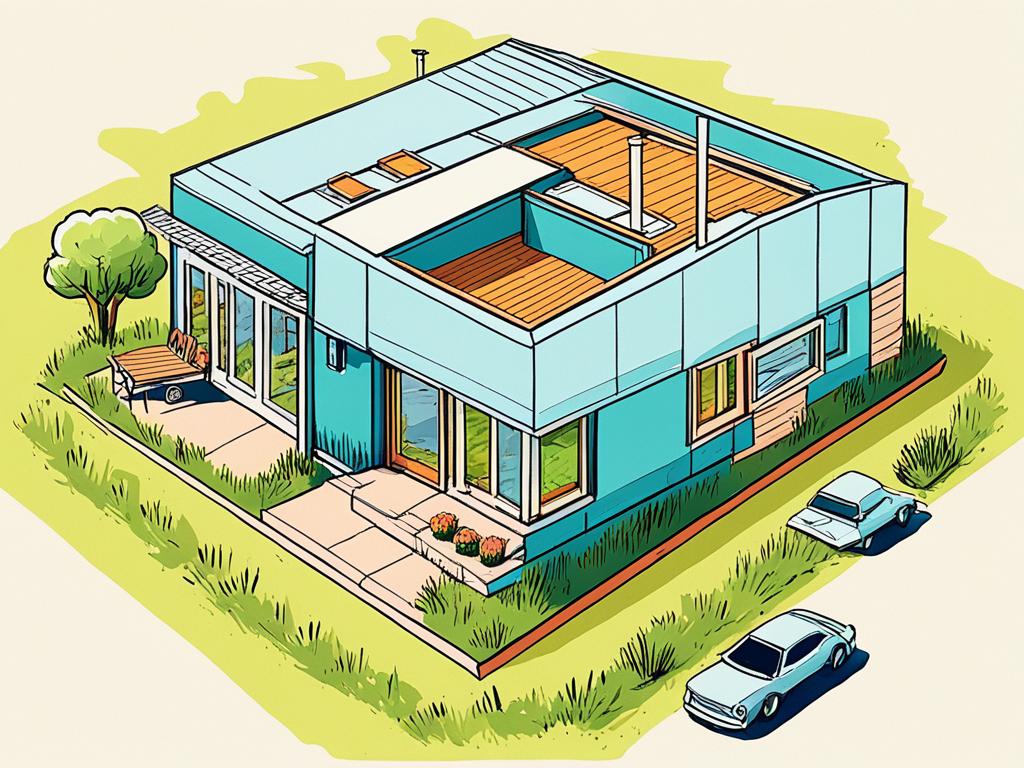
Potential Drawbacks of Tiny Houses
While tiny houses offer many benefits, it’s important to consider the potential drawbacks that come with living in such a small space. Here are a few challenges that homeowners may face:
Zoning Regulations and Building Codes
One of the main challenges when it comes to tiny house living is dealing with zoning regulations and building codes. In many areas, it can be difficult to find suitable land where you are allowed to park or build a tiny house. These regulations may restrict the location choices for those interested in this lifestyle.
Financing Challenges
Another hurdle that potential tiny house owners may encounter is financing their home. Unlike traditional houses, obtaining a mortgage for a tiny house can be challenging due to the smaller size and unconventional construction methods. Many individuals have to rely on personal savings or alternative financing options to cover the costs.
Limited Storage Space
Living in a tiny house requires a significant adjustment in terms of possessions and storage. With the limited square footage, homeowners need to carefully curate their belongings and downsize to fit into the available space. This can be particularly challenging for individuals who have accumulated a lot of items over the years.

Lifestyle Adjustments
Living in a tiny house also necessitates significant lifestyle adjustments. The small space can feel cramped, especially for families or individuals with pets. Sharing a small living area can require compromises in terms of privacy and personal boundaries. It’s important to consider whether you are ready to make the necessary lifestyle adjustments before committing to tiny house living.
In spite of these potential challenges, many individuals find that the benefits of tiny house living outweigh the drawbacks. It’s essential to carefully weigh both the advantages and disadvantages to make an informed decision before embarking on the tiny house journey.
Sustainable Living in Tiny Houses
Tiny houses are often considered more environmentally friendly than traditional homes. They have a smaller carbon footprint due to their reduced energy consumption and materials used in construction. The limited size of these homes encourages residents to be mindful of their consumption and to live a more minimalist lifestyle. People living in tiny houses tend to consume less and prioritize sustainable choices, such as using renewable energy sources and reducing waste.
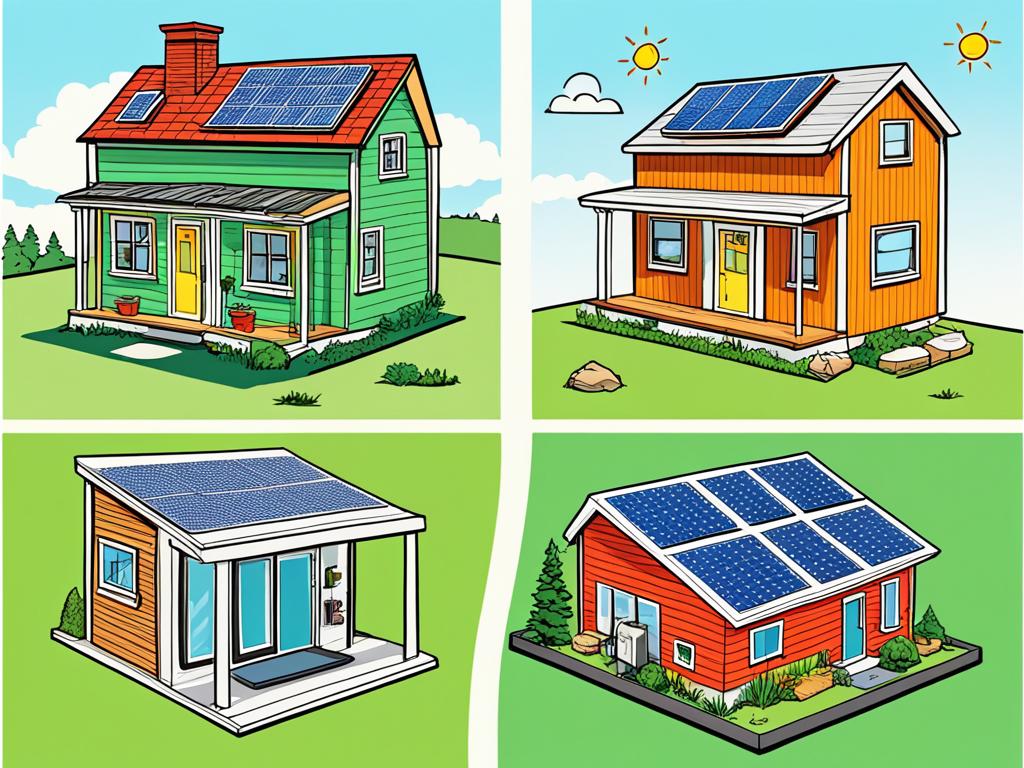
Living in a tiny house not only reduces the overall carbon footprint but also promotes energy efficiency. With smaller spaces to heat and cool, tiny houses require less energy for temperature control, resulting in lower energy consumption. Additionally, sustainable materials can be used in the construction of these homes, further reducing environmental impact.
The emphasis on minimalism in tiny house living plays a significant role in consumption reduction. With limited space, residents are forced to prioritize their needs and possessions, leading to a more conscious approach to consumption. By downsizing and owning fewer items, individuals living in tiny houses contribute to a reduction in waste and unnecessary resource consumption.
Furthermore, the sustainable practices adopted in tiny houses extend beyond energy efficiency and consumption reduction. Many tiny house owners choose to incorporate renewable energy sources, such as solar panels, for powering their homes. This further reduces reliance on non-renewable energy and helps to create a more sustainable living environment.
In conclusion, adopting a sustainable living lifestyle in tiny houses goes hand in hand with reducing the carbon footprint, prioritizing energy efficiency, and promoting consumption reduction. By embracing minimalism and making eco-conscious choices, residents of tiny houses contribute to a more sustainable future.
Creating a Sense of Community
Tiny house living often fosters a strong sense of community. Many tiny house owners choose to live in tiny house communities, where residents share resources and support one another. These communities can provide a sense of belonging and social connection, making tiny house living more fulfilling. Community living also allows for shared amenities and collective problem-solving.
Living in a tiny house community offers numerous advantages. It provides an opportunity for individuals to form meaningful relationships with like-minded neighbours, creating a support system that extends beyond the walls of their homes. Through shared resources, such as tools, equipment, and even garden supplies, community members can save money and reduce waste.
One of the greatest benefits of living in a tiny house community is the sense of belonging and social connection it offers. Close-knit communities often organize social events, such as cookouts, outdoor movie nights, or game nights, fostering a friendly and inclusive atmosphere. These communal gatherings allow community members to engage in meaningful interactions, develop friendships, and build a strong support network.
Moreover, tiny house communities facilitate problem-solving on a collective level. Whether it’s brainstorming ideas for sustainable living practices or coming together to address maintenance issues, the shared knowledge and skills of the community contribute to a more resilient and self-sufficient living environment.
Shared Amenities for Enhanced Living
Living in a tiny house community also means access to shared amenities. These amenities may include communal green spaces, laundry facilities, community gardens, or even shared workspaces. By pooling resources, members of the community can enjoy the benefits of these amenities while minimizing individual costs and environmental impact.
Shared amenities not only enhance the quality of life but also encourage social interaction among community members. A community garden, for example, can provide an opportunity for residents to come together, exchange gardening tips, and harvest fresh produce. Similarly, a communal workspace can foster collaboration and creativity among community members who work from home or run their own small businesses.
The image below illustrates a vibrant tiny house community, where residents enjoy shared amenities and the camaraderie of like-minded neighbours:
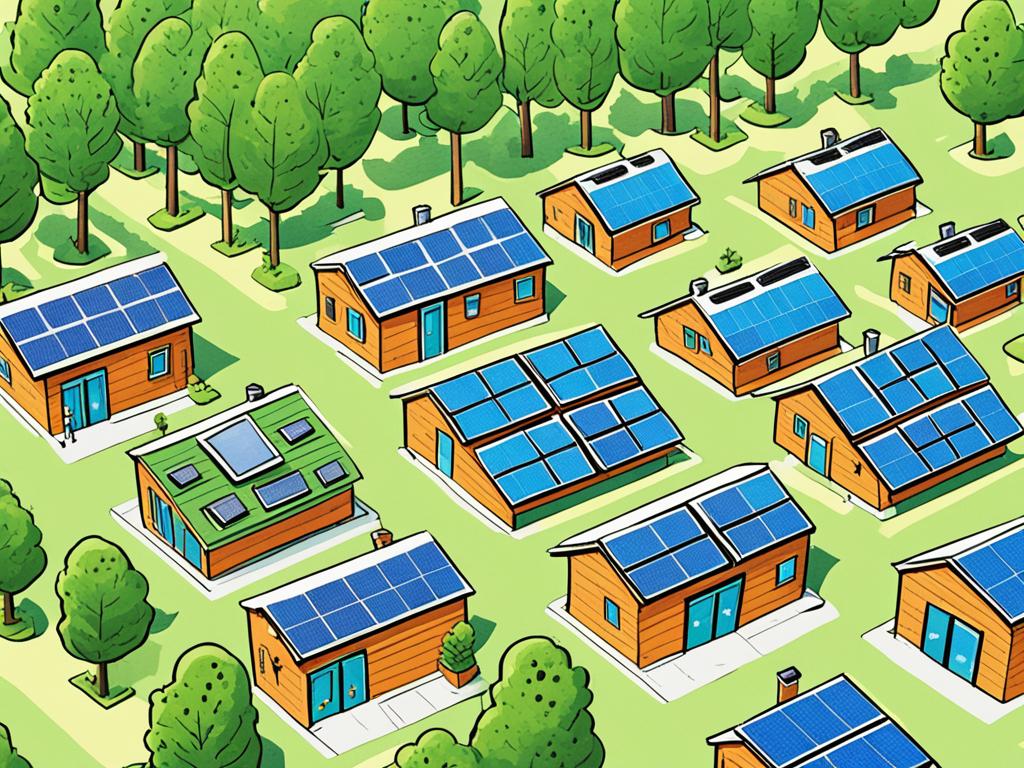
In summary, living in a tiny house community offers more than just a place to live; it provides a sense of belonging, social connection, and shared resources that enhance the overall experience. The ability to share amenities and problem-solve collectively contributes to a more fulfilling and sustainable way of life. Tiny house communities are not only about square footage but also about building meaningful relationships and creating a supportive environment for a thriving community.
Conclusion
In conclusion, square-shaped tiny houses offer several unique advantages. One of the standout benefits is the affordability they provide, allowing individuals to reduce their housing expenses and have more financial freedom. Additionally, these compact homes are highly energy-efficient, resulting in lower energy consumption and reduced environmental impact. The minimalist and eco-friendly lifestyle that comes with living in a tiny house promotes sustainability and conscious consumption.
However, it’s important to consider the potential drawbacks of square-shaped tiny houses. Zoning regulations and financing challenges can pose obstacles when it comes to finding suitable land and securing funding for the construction. Another drawback is limited storage space, which requires homeowners to downsize and declutter their belongings. These considerations make it imperative for individuals to carefully evaluate their priorities and lifestyle before committing to tiny house living.
Ultimately, square-shaped tiny homes can be a viable option for those seeking a simpler and more sustainable way of living. By embracing the benefits of affordability, energy efficiency, and a minimalist lifestyle, individuals can create a harmonious space that aligns with their values and priorities. The decision to live in a tiny house should be driven by personal preferences and a thorough understanding of the benefits and potential drawbacks associated with this unique housing choice.


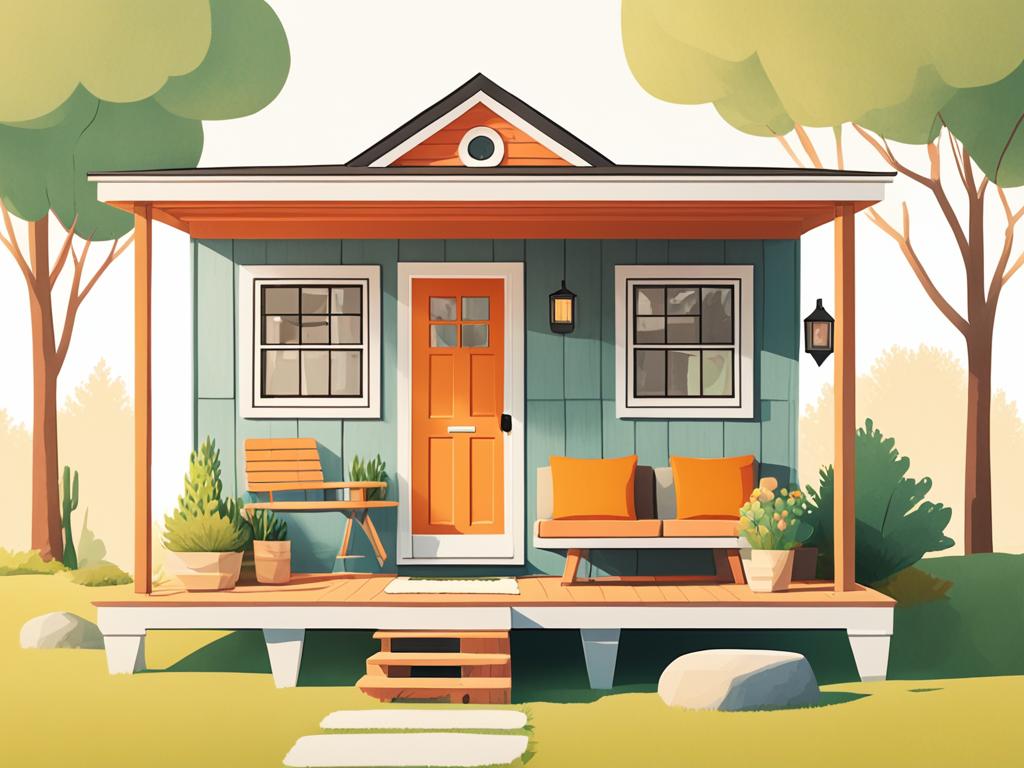



Join The Discussion